Composers / Fryderyk Chopin / Routes

Trasa Family
Fryderyk Chopin spent his entire childhood and adolescence in Warsaw. For several years after their marriage, in 1806, Mikołaj and Justyna Chopin frequently had to move with their employer, Countess Ludwika Skarbek, between Warsaw and Żelazowa Wola, where she had her estate. Ludwika (b. 1807), their eldest child, entered the world during one of their stays in Warsaw, and Fryderyk, the future great composer, was born in Żelazowa Wola in either 1809 or 1810. Chopin’s date of birth has been a topic of speculation for a century. What is known for certain is that the Chopins moved to Warsaw permanently in the autumn of 1810, as Mikołaj had been offered work as a contractual French teacher at the Warsaw Lyceum.
The young couple and their two children first moved into Jan Böhm’s townhouse at ul. Krakowskie Przedmieście 7 (according to the numbering now used). That is where their next child, Izabella, was born.
Soon afterwards, the family moved to the Saxon Palace, as this was the main building of the Warsaw Lyceum, with which Mikołaj was to be permanently associated. Many Lyceum teachers lived in the wings of the palace. This is where the Chopins’ youngest child, Emilia, was born. It is also where young Fryderyk’s musical genius first manifested itself.
When the Lyceum moved from the Saxon Palace to Casimir Palace, in March 1817, all the teachers and their families had to move with it. The Chopins occupied apartment 18. This was on the second floor of the central part of what is now known as the ‘former vice-chancellor’s building’. Their neighbours included Samuel Bogumił Linde, the rector of the Lyceum, and the large Kolberg family. Fryderyk became close friends with the young Kolbergs.
Chopin spent almost all his formative years in Casimir Palace. Tragedy struck the family in 1827, when the youngest of the siblings, Emilia, died of tuberculosis. The Chopins moved out of the apartment, which now held too many painful memories, and into Krasiński Palace at ul. Krakowskie Przedmieście 5. This was Chopin’s last Warsaw address. It was from here that he took his baggage to the Saxon Post Office on 2 November 1830 before setting off for the Wola Tollgate, where he boarded the mail coach and left Poland forever.
Apart from the addresses of where Chopin resided, this route follows, albeit less literally, four more places associated with him and his family: Powązki Cemetery, where his parents and sisters are buried; Holy Cross Church, where his heart is kept in an urn; the Chopin monument in Łazienki Park; the Fryderyk Chopin Museum on ul. Okólnik, where his symbolic presence can be felt everywhere.
-
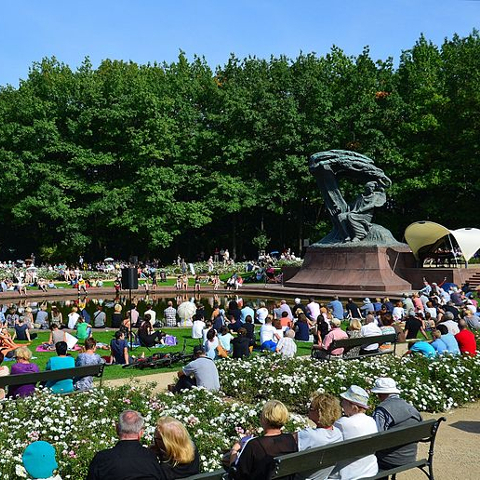
Chopin concerto in the Royal Baths Park. (creative commons)
-

Czapski (Krasiński) Palace. Phot. Waldemar Kielichowski.
-
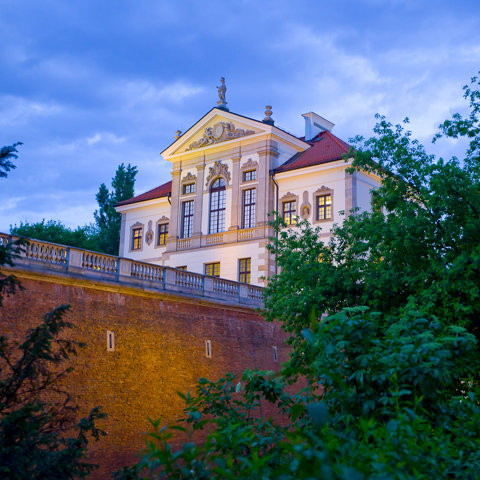
Fryderyk Chopin Museum. Phot. Waldemar Kielichowski.
-
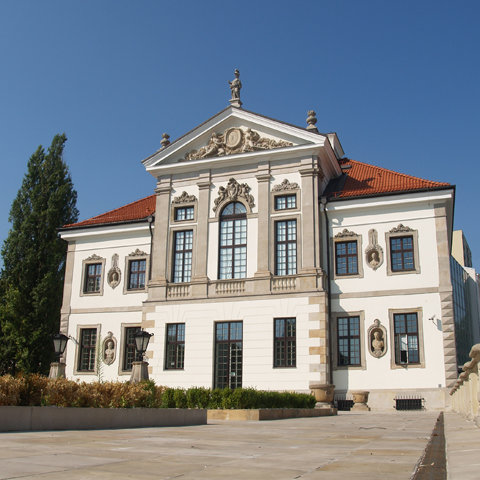
Fryderyk Chopin Museum. Phot. Waldemar Kielichowski.
-
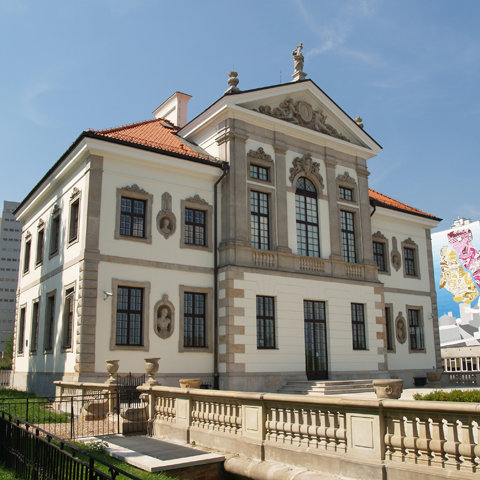
Fryderyk Chopin Museum. Phot. Waldemar Kielichowski.
-
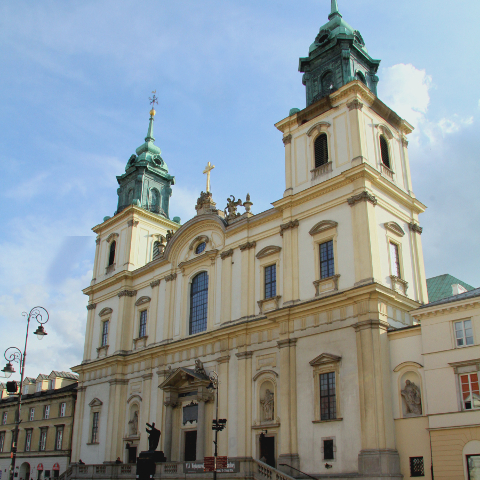
Holy Cross Church. Phot. Łukasz Oracz.
-
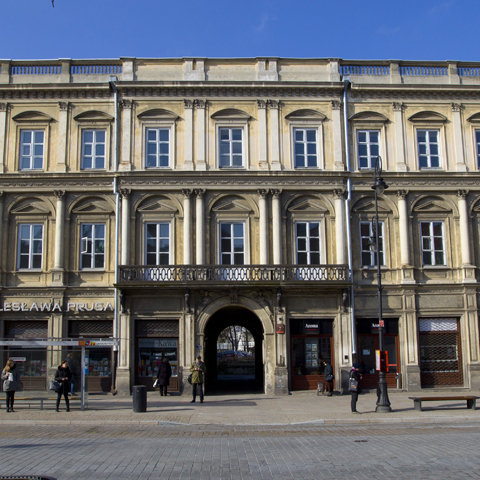
Jan Böhm tenement. Phot. Waldemar Kielichowski.
-
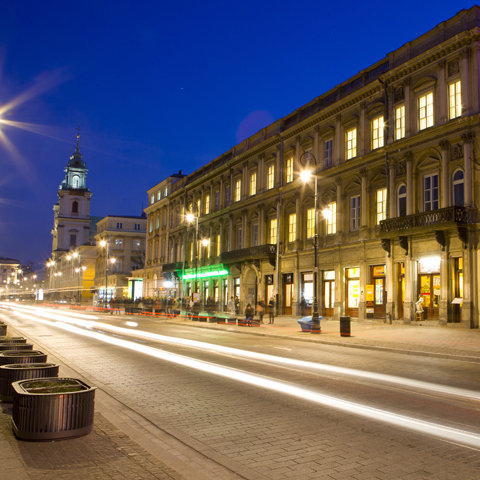
Jan Böhm tenement. Phot. Waldemar Kielichowski.
-
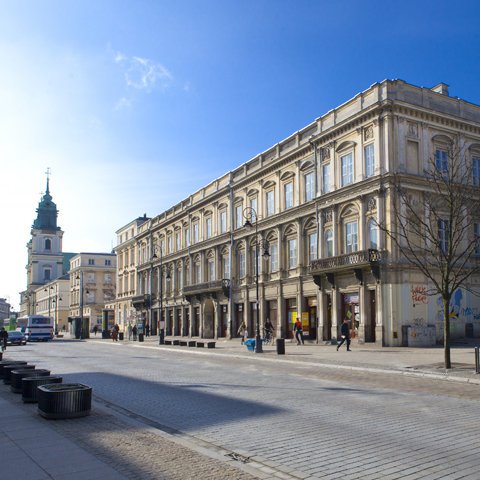
Jan Böhm tenement. Phot. Waldemar Kielichowski.
-
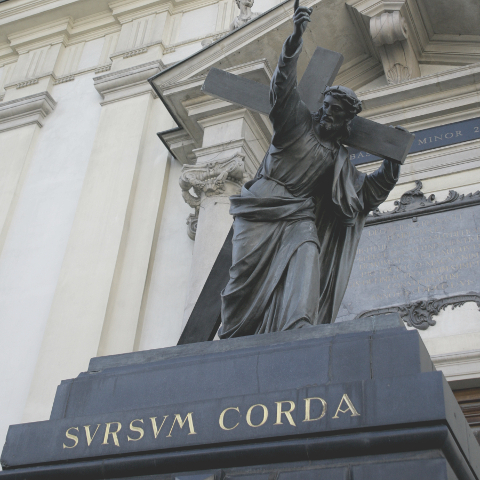
Jesus monument in front of Holy Cross Church. Phot. Łukasz Oracz.
-
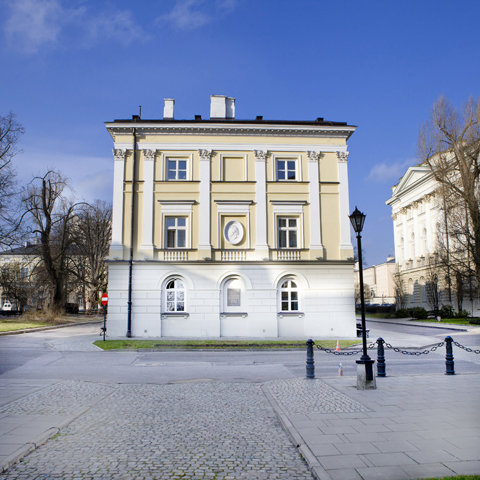
Kazimerzowski Palace. Phot. Waldemar Kielichowski.
-

Kazimerzowski Palace. Phot. Waldemar Kielichowski.
-

Kazimerzowski Palace. Phot. Waldemar Kielichowski.
-
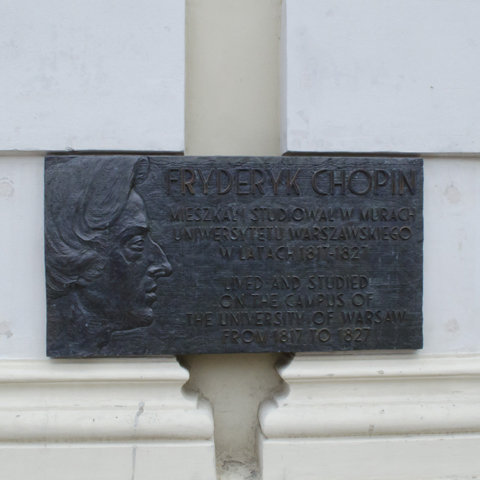
Memorial plaque at the gate of University of Warsaw. Phot. Waldemar Kielichowski.
-
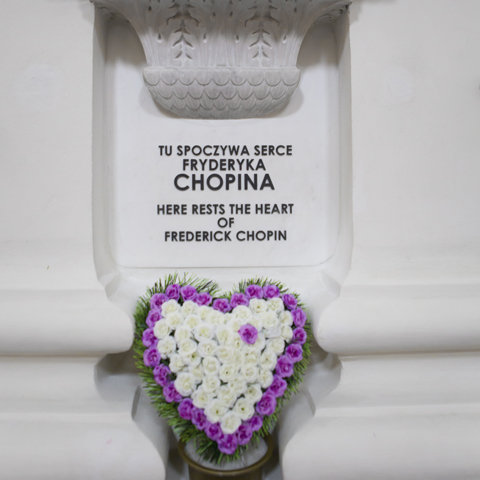
Memorial plaque in Holy Cross Church. Phot. Waldemar Kielichowski.
-
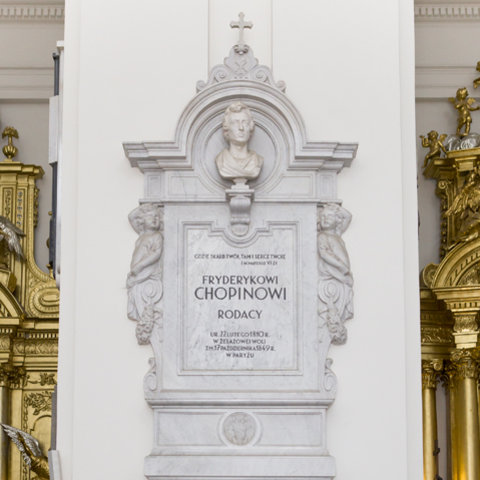
Memorial plaque in Holy Cross Church. Phot. Waldemar Kielichowski.
-
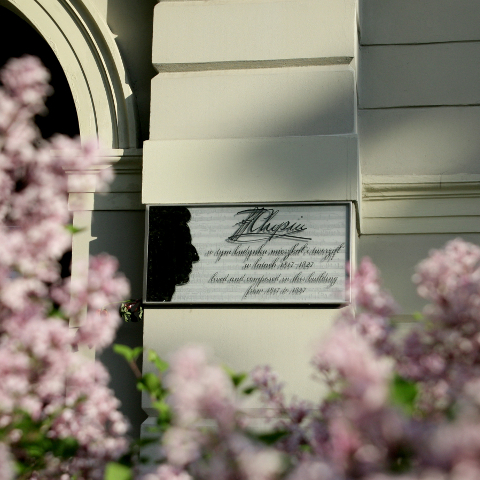
Memorial plaque. Phot. Łukasz Oracz.
-
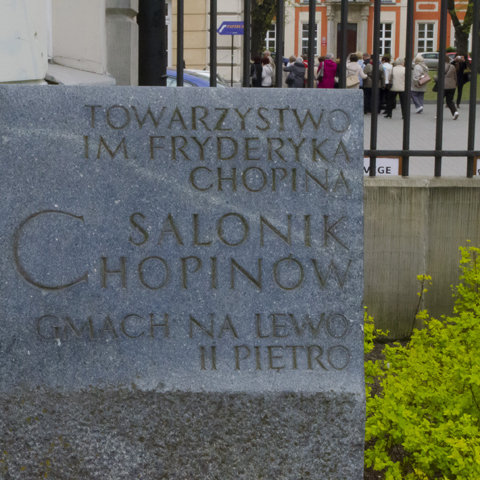
Memorial plaque. Phot. Waldemar Kielichowski.
-
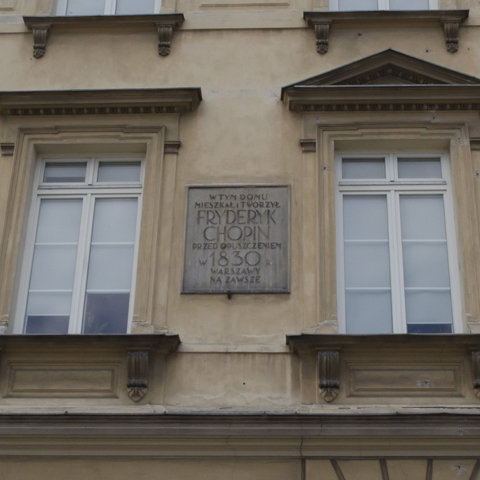
Memorial plaque. Phot. Waldemar Kielichowski.
-
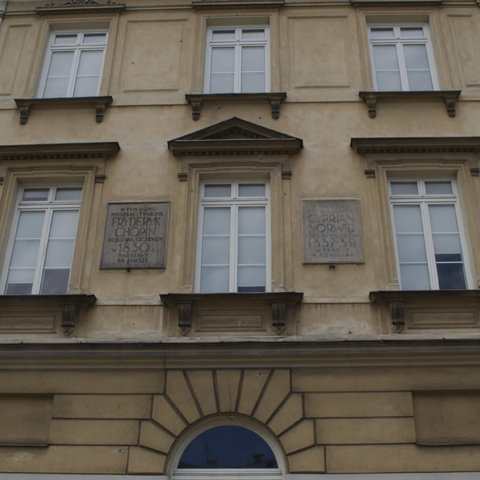
Memorial plaque. Phot. Waldemar Kielichowski.
-
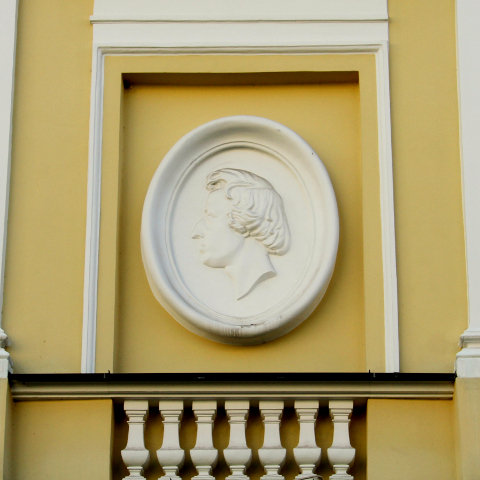
Memorial relief. Phot. Łukasz Oracz
-
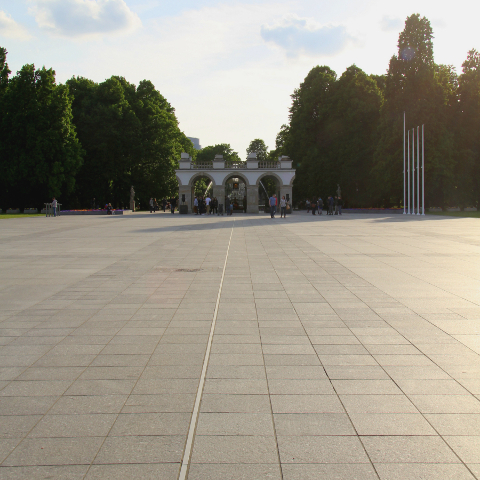
Piłsudski Square. Place where was situated Saxon Palace. Phot. Łukasz Oracz.
-
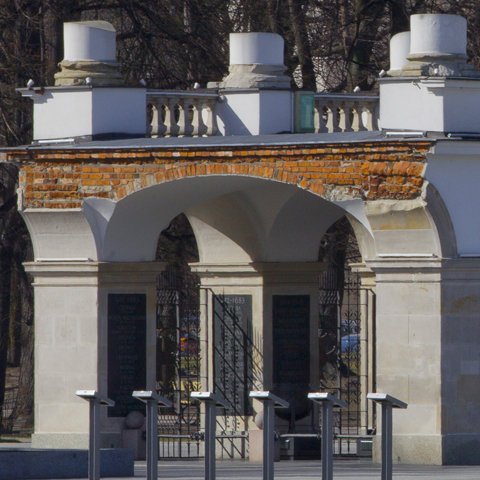
Saved fragment of Saxon Palace. Today Tomb of the Unknown Soldier. Phot. Waldemar Kielichowski.
-
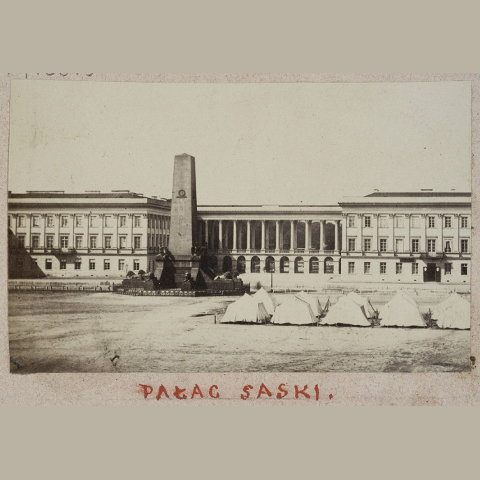
Saxon Palace, Karol Beyer. POLONA.
-
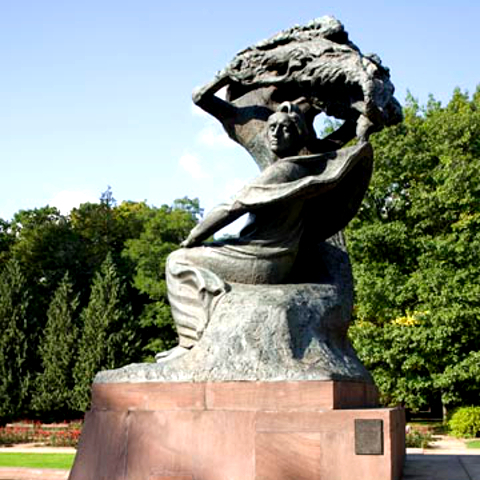
The Chopin Monument in the Royal Baths Park. Phot. Czesław Czapliński.
-
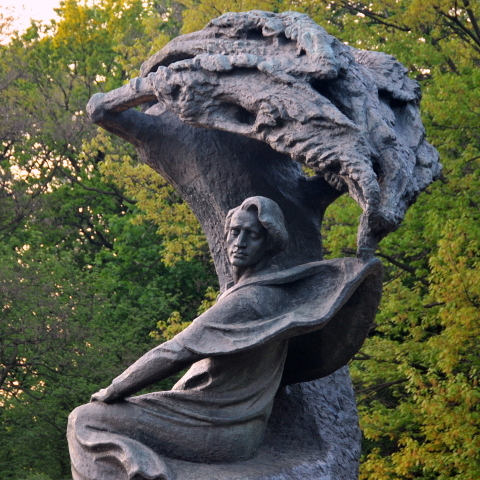
The Chopin Monument in the Royal Baths Park. Phot. Czesław Czapliński.
-
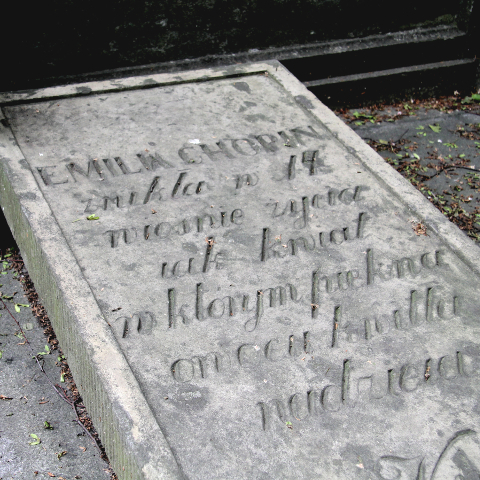
Tomb of Emillia Chopin. Phot. Łukasz Oracz.
-
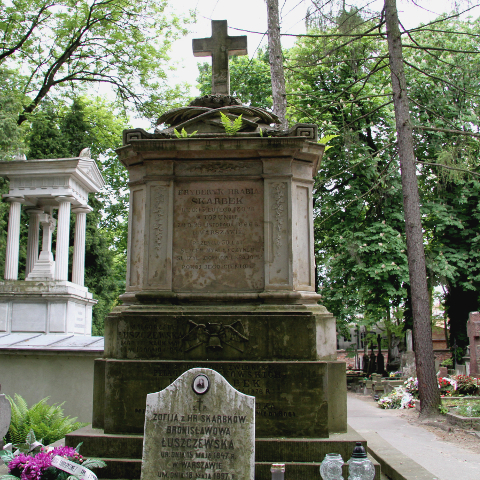
Tomb of Fryderyk Skarbek. Phot. Łukasz Oracz.
-
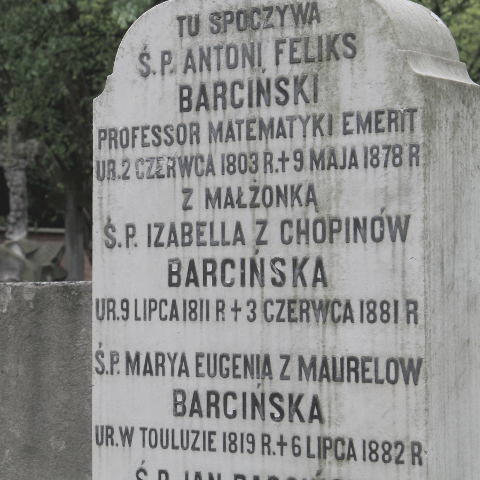
Tomb of Izabella Barcińska. Phot. Łukasz Oracz.
-
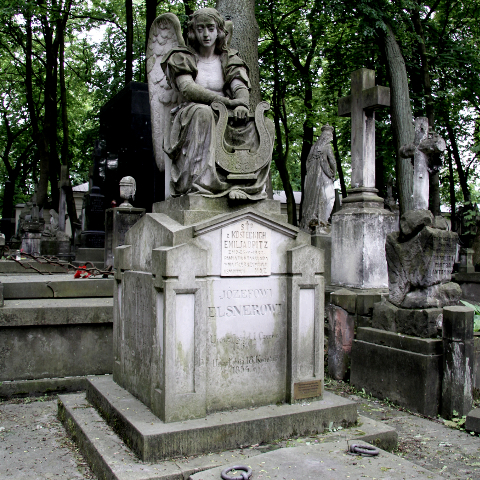
Tomb of Józef Elsner. Phot. Łukasz Oracz.
-
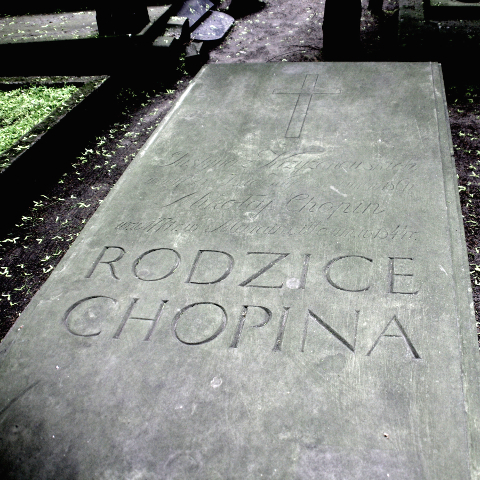
Tomb of Justyna and Mikołaj Chopin. Phot. Łukasz Oracz.
-
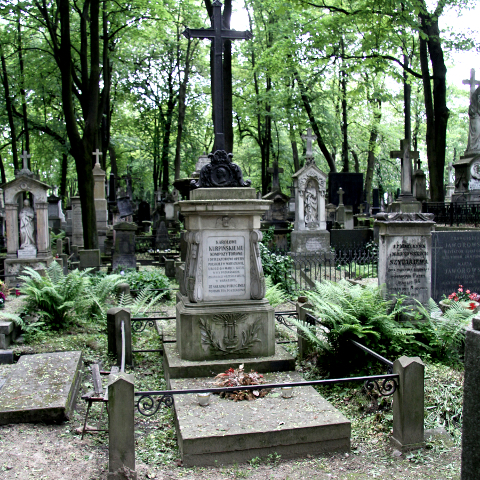
Tomb of Karol Kurpiński. Phot. Łukasz Oracz.
-
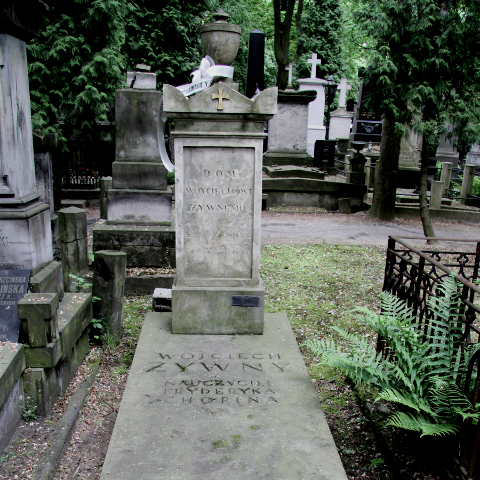
Tomb of Wojciech Żywny. Phot. Łukasz Oracz.
-
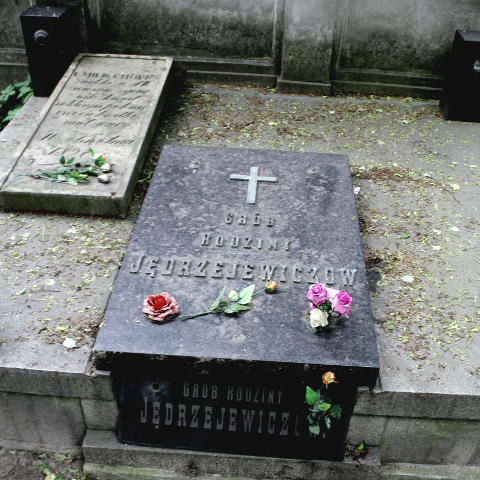
Tombs of Emilia Chopin and Ludiwka Jędrzejewiczowa. Phot. Łukasz Oracz.
:
Fryderyk Chopin – Polonaise in A flat major [WN 3] (1821) – Marek Drewnowski (piano Pleyel, 1848), NIFCCD019, (C)(P) The Fryderyk Chopin Institute
Fryderyk Chopin – Polonaise in B flat major [WN 1] (1817) – Marek Drewnowski (piano Pleyel, 1848), NIFCCD019, (C)(P) The Fryderyk Chopin Institute
Fryderyk Chopin – Rondo in F major à la Mazur, Op. 5 (before 1826) – Tatiana Shebanova (piano Erard, 1849), NIFCCD017, (C)(P) The Fryderyk Chopin Institute
:

26/28 Krakowskie Przedmieście Street

5 Krakowskie Przedmieście Street

1 Okólnik Street

3 Krakowskie Przedmieście Street

7 Krakowskie Przedmieście Street

1 Powązkowska Street

Piłsudskiego Square (formerly Saxon Square)